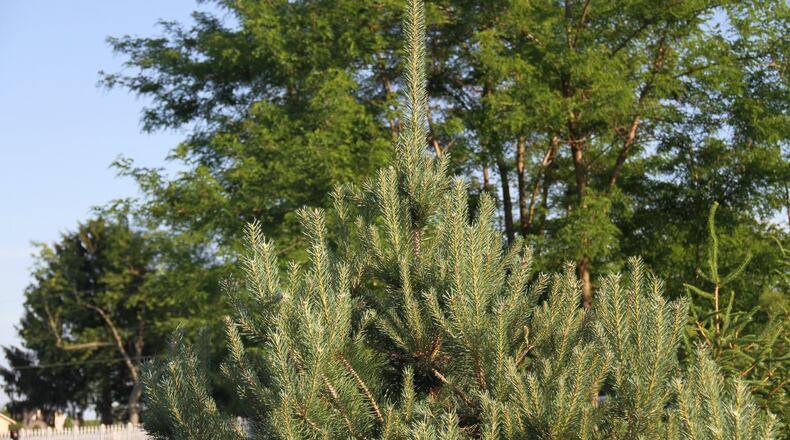When it comes to pruning evergreen trees, the key is to identify your tree. Pines are a little picky as to when they can be pruned. Spruces and firs, on the other hand, can be pruned just about any time.
A pine tree’s growth is dependent on the buds at the ends of each branch (terminal buds). If you look closely at a pine tree, you will not find any buds up and down the branch; they are all at the terminal ends of the branches.
Spruces and firs have buds at the ends of the stems but also along the stem. This is important.
Pines should only be pruned after the new buds have elongated and are showing the new needles. We call this new growth the “candle.” If you haven’t noticed this before, watch your buds and new growth this year.
In addition, pines need to be pruned before next year’s buds develop in August. Therefore, if you need to prune pines, do it between stem elongation or candling and mid-July.
If you prune after the new buds have developed, or now for that matter, the branch that you prune will no longer grow. There are no more buds along the stem to provide growth.
Other evergreen trees can be pruned after the new growth emerges if it’s needed.
The exception would be if you need to “limb up,” or remove lower branches of evergreen trees. These can be cut back to the trunk at any time.
In terms of evergreen shrubs such as taxus, boxwood, juniper and arborvitae, pruning is recommended after the new growth emerges this spring.
Last week I mentioned rejuvenation pruning on deciduous shrubs. Because they store their food in the root system, they can easily be rejuvenated.
Evergreen shrubs store their food in their leaves, so rejuvenation pruning is not usually recommended.
If you have an overgrown taxus or juniper, keep in mind that the farther you cut it back, the longer it will take the plant to recover. It’s recommended to cut back to pencil-sized wood for best recovery.
That said, I have made extreme cuts on junipers, some back to wood that is one inch in diameter. The plants looked pretty rough for several years, but they eventually filled back in.
When it comes to pruning, it’s part art and part science. The art comes into play with the overall appearance of the plant — the science is in making proper pruning cuts.
About the Author
